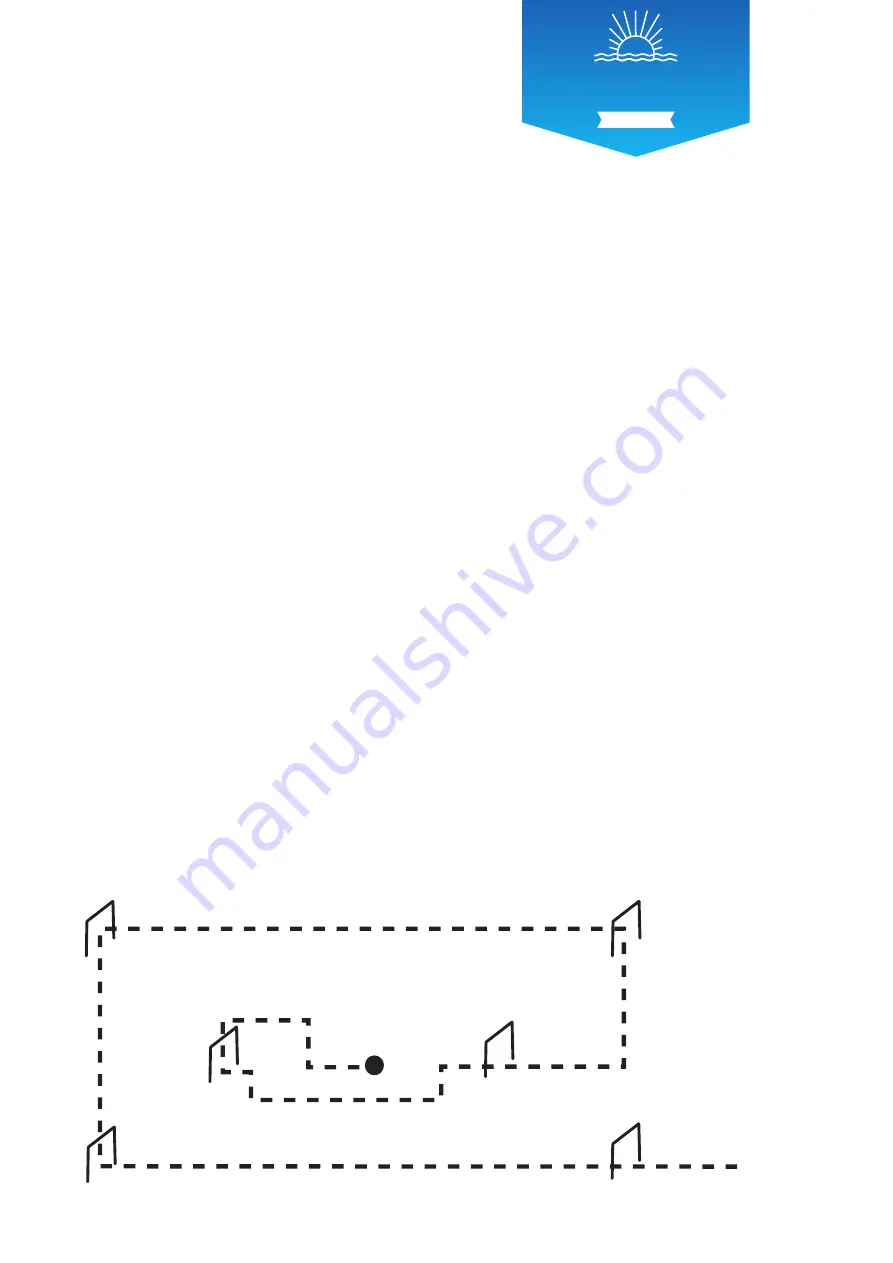
Instruction manual / Handleiding / Mode d’emploi / Anleitung /
Manual de Instrucciones / Manuale d’istruzioni
Outdoor Play Croquet 2020
Art.no.0713053
Van der Meulen, Lorentzstraat 23, 8606 JP Sneek
Content - Inhoud - Contenu - Inhalt - Contenido - Contenuto:
4 players, 4 balls, and 2 mallets and 10 metal hoops.
4 spelers, 4 kogels, en 2 stokken en 10 metalen poortjes.
4 maillets, 4 boules, 2 piquets et 10 arceaux métalliques.
4 Spieler, 4 Bälle, und 2 Schläger und 10 Metalltore.
4 jugadores, 4 bolas, 2 mazos y 10 arcos de metal.
4 giocatori, 4 palle, 2 mazze e 10 porte metalliche.
CROQUET INSTRUCTIONS:
Game rules:
At it’s simplest, up to four players compete to see who can hit the ball from the start, through all the hoops in the prearranged order, then hit
the end post in the fewest attempts. Start playing new, or read on for more details!
Croquet has existed in various farms for 500 hundred years, and the traditional image is of a quiet, gentle game, on well-trimmed lawns, played
by elegant society figures in stylish suits and gowns. It’s popularity has meant that it has spread away from this environment, into back gardens,
parks and beaches. In fact, some players enjoy ‘Extreme Croquet’, in which they deliberately choose a difficult playing surface, with holes in the
ground, bumps, lumps, inquisitive pets, undergrowth and ether natural features adding to the challenge. These modern developments mean
that this traditional game can be enjoyed just about anywhere, by anyone, of differing abilities and ages. This game has survived for centuries,
with many regional variations, but generally because of its simplicity.
The following outline will set you on the way to enjoying this old-style game with whatever modern twists you want to add. While there is a tra-
ditional layout for the hoops and post, as long as all players face the same conditions, it can be left up to the imagination and sense of humor of
the players.
Push the finish peg into the centre of the playing area (have a look at the diagram below for a suggested layout, but feel free to design your
own). Push two hoops into the ground, a few paces away from either side of the finish peg, towards the ends of the playing area. The line
between these hoops marks the centre of the playing area. Use the four remaining hoops to mark the four corners of the playing area, leaving
a few paces between the corner hoops and the edge of the area. Choose a suitable starting point a few paces in front of the first hoop. Some
countries play using more hoops - this is particularly good for larger gardens and playing areas.
Each of four players has a red, blue, green or yellow ball. lf just two are playing, it is possible to use two balls each, one having blue and green,
and the opponent having red and yellow. With the ball placed at the decided starting point, the player stands in front of the ball and then dri-
ves it towards the first hoop. You are free to hit the ball in your own style, but the traditional way is to hold it in front of you, with the head of
the mallet pointing at the ball. Slowly swing the mallet back between your knees, than swing it forward to drive the ball in the required direc-
tion. Same players may choose to swing it to one side, more like a golf club. lf the ball goes through the hoop, a second turn is taken. The ball
must pass through every hoop in the correct direction. Missing a hoop means that the play passes to the next player. Hitting another player’s
ball gets the striking player two extra turns.
Play alternates between the players until one reaches the finish post and is declared the winner. lf agreed by all the players, a longer game
can be played, by going around the circuit twice. lf a ball goes off the playing area, it should be replaced as near to the point where it left the
playing area as possible.
P L A Y
OUTDOOR






